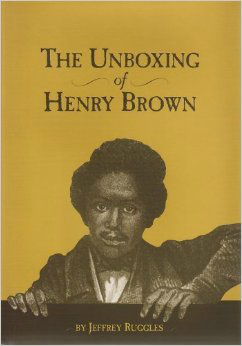 The Unboxing of Henry Brown, by Jeffery Ruggles.
The Unboxing of Henry Brown, by Jeffery Ruggles.
Ruggles, Jeffrey, The Unboxing of Henry Brown , Library of Virginia, Richmond,Virginia, 2003.
The book, The Unboxing of Henry Brown, by Jeffrey Ruggles, not only talks about Brown’s early life and escape to freedom, it gives a rare glimpse into the life of a 19th Century moving panorama showman. Much of the book
focuses on Brown's moving panorama. He spent ten years researching the book, making several trips to England uncovering some never before published information.
Brown's moving panorama did not survive, but by piecing together bits of information from newspaper reviews, handbills and from a book of that time, The Nubian Slave, Ruggles was able to speculate on what the moving panorama looked like and how it was created.
My favorite parts of the book talk about what it was like to be a moving panorama showman in those days. It was hard work transporting the cranking apparatus and scroll by train and horse
and cart. Protecting the delicate scroll from the weather, finding places to perform, procuring letters of endorsement and dealing with racism were just a few of the challenges Brown faced.